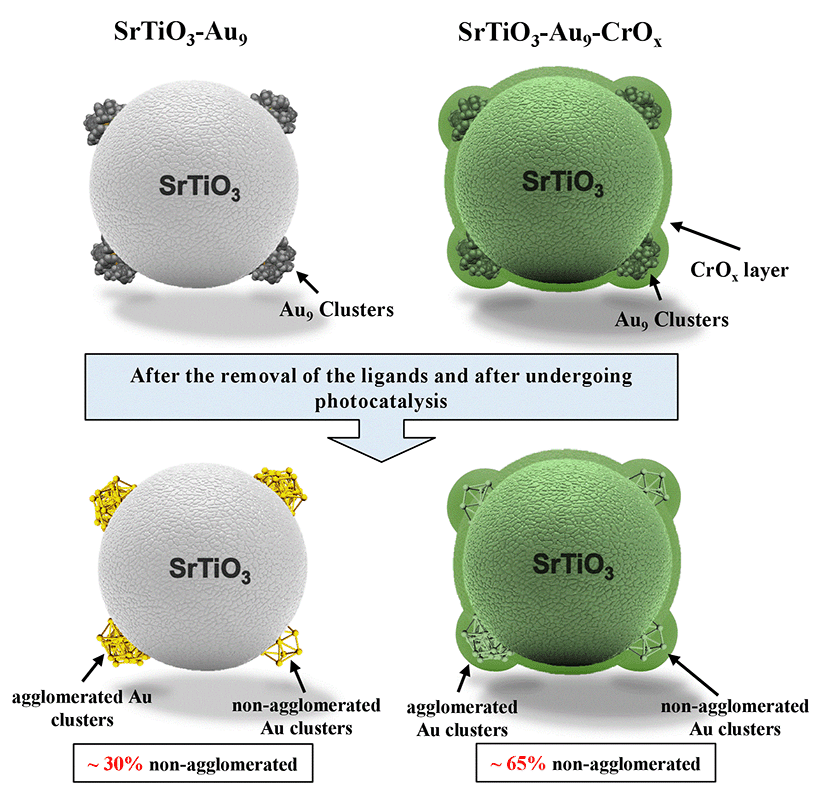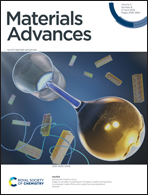Suppression of phosphine-protected Au9 cluster agglomeration on SrTiO3 particles using a chromium hydroxide layer†
Abstract
Gold clusters have been shown to have great potential for use as co-catalysts in photocatalytic water splitting. Agglomeration of Au clusters deposited onto semiconductor surfaces into larger particles is a major challenge. Metal oxide overlayers can be used to improve the stability of Au clusters on surfaces and avoid their agglomeration. The aim of this work is to investigate the inhibition of phosphine-protected Au9 clusters beneath a Cr(OH)3 overlayer to agglomerate under conditions of photocatalytic water splitting (i.e. UV irradiation). Au9 was deposited on the surface of SrTiO3 using a solution impregnation method followed by photodeposition of a Cr(OH)3 layer. After UV light irradiation for 7 hours for photocatalytic water splitting, uncovered Au clusters on SrTiO3 agglomerated into larger particles. However, agglomeration was inhibited when a thin Cr(OH)3 layer was deposited onto the SrTiO3-Au9 system. From careful XPS measurements, the chemical state of the overlayer is initially determined to be Cr(OH)3 but upon heating at 200 °C for 10 min it converts to Cr2O3. Through photocatalysis experiments it was found that the Cr(OH)3 overlayer blocks the sites for O evolution reaction on the SrTiO3-Au9.



 Please wait while we load your content...
Please wait while we load your content...